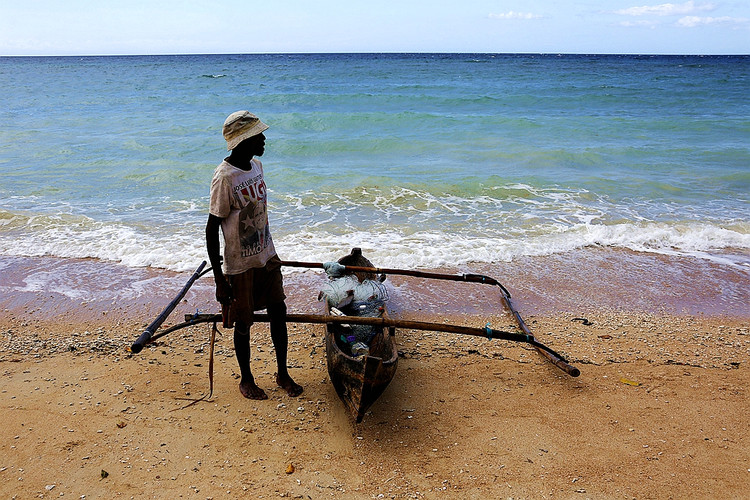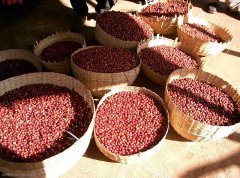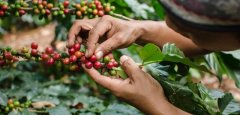History of Origin and Development of Kona Fine Coffee kona Coffee unique to Hawaii
Hawaiian Coffee, the famous Kona Coffee, English kona, is also transliterated as Kona Coffee and Kona Coffee. Planted on the slopes of Mauna Loa on the southwest coast of Hawaii. In terms of flavor, Kona beans are closer to Central American coffee than Indonesian coffee. Because it grows on volcanoes and has high-density artificial farming, its average quality is very high and carefully processed. Kona coffee beans are neatly shaped on average, and their fruits are unusually full and bright. The taste of coffee is rich and aromatic, with cinnamon flavor, strong sour and sweet taste, moist, smooth taste, very rich flavor, and fresh Kona coffee is extremely fragrant. If you think espresso is too thick, African coffee is too sour, and Central and South American coffee is too rough, then Kona may be right for you. Kona is like a girl in the Hawaiian sunshine breeze, fresh and natural.
Although Hawaii is often affected by tornadoes, the climatic conditions are very suitable for the coffee industry. There is plenty of rain and sunshine, and there is no worry of frost. The excellent quality of Kona coffee benefits from the suitable geographical location and climate. Coffee trees grow on the slopes of volcanoes, and their geographical location ensures the altitude needed for coffee growth; the dark volcanic ash soil provides the minerals needed for coffee growth. The climate is very suitable. The sun in the morning gently passes through the air full of water vapor. On most days, around 2 o'clock in the afternoon, the mountains become more humid and foggy, and the white clouds surging in the air are natural umbrellas for coffee trees. And the evening will become sunny and cool, but there will be no Frosts Descent. Because of the suitable natural conditions, the average yield of Kona coffee is very high, reaching 2240 kg per hectare, while in Latin America, the yield of coffee per hectare is only 600kg ~ 900kg. The unique growth and climatic environment create a stronger coffee flavor.
But to the regret of coffee fans, only about 1400 hectares of coffee is produced. And because of Hawaii's high income and a large number of tourists, Kona coffee is so expensive that it is even sold with no more than 5% of Kona beans. In recent years, neighboring islands such as maui, kauai and molokai have also begun to grow coffee commercially.
The real Hawaiian Kona coffee has the sweetness of caramel, which makes people enjoy the unique pleasure and leads you slowly into the detached state of tasting coffee. Of all the coffee producers, Hawaii has the most stringent management of the coffee industry, the highest labor costs and the best level of investment.
Hawaii's coffee industry has to compete with the expanding tourism industry. Most coffee is grown on the slopes of MaunaLoa. Mauna Loa was originally a volcano located in the western part of the Kona region on the island of Hawaii. The coffee producing area is about 30 kilometers long and its growing areas are mainly concentrated in the north and south of the area. Coffee trees are planted in relatively desolate areas, but their soil is fertile and contains volcanic ash. Although it takes a lot of physical labor to start planting and it is difficult to manage, it is comforting that Kona's coffee trees (at least those growing above 90 meters above sea level) do not seem to be affected by any diseases and insect pests.
Real Kona coffee is indeed a treasure in the world and is not easy to find. The best Kona coffee is divided into three grades: ExtraFancy, Fancy and NumberOne. This third-class coffee is produced on manors and under natural conditions. Most of the coffee on the market today that calls itself Kona contains less than 5% of the real Hawaiian Kona. Another good Hawaiian coffee can be found in the United States: Hawaii Kaj Farm Coffee (KaiFarms).
Origin
In 1813, a Spaniard first grew coffee in the ManoaValley Valley of Oahu, which is today the main campus of the University of Hawaii. In 1825, an English agronomist named John Wilkinson transplanted some coffee from Brazil to grow in the coffee garden of Chief Birch on the island of Oahu. Three years later, an American missionary named Samuel Riveland Rags brought the branches of the coffee tree from Birch Emirates Garden to Kona, a descendant of the Arabica coffee tree that first grew on the Ethiopian plateau. To this day, Kona Coffee still carries on its noble and ancient lineage. Europeans discovered Hawaii by accident. They were looking for a legendary passage to the east where spices were produced, but they found the richest pearl in the Pacific Ocean. A captain named James Cook landed at Kauai in 1778 to resupply his ship. He encountered severe cold and storms on his way back, so he had to return to Hawaii at the beginning of the next year and anchor on a beach in Kona. Since then, the Hawaiian islands have become an important port of call on world trade voyages. The chiefs of Hawaii exchanged sandalwood, the island's specialty, for weapons, goods and livestock with passing ships. From the 1820s, Western religion began to spread widely on the island, and many churches built at that time are still in use today.
With the development of tourism in Hawaii, tourists can visit coffee farms, see or participate in various processes such as coffee harvest, coffee bean processing, baking and grinding, and make a cup of coffee that really belongs to them. In the Kona region, there are about 600 independent coffee farms, most of which are small family farms, usually between 18 and 42 acres. Kona Coffee earns more than $10 million a year for these coffee farms.
Kona coffee has always been grown at home. At first, only men were allowed to work in the coffee garden, and later women joined in. This kind of family production of Hawaiians preferred to rely on the efforts of their families rather than hiring workers to work, so it was normal for Hawaiians to have eight or nine children at that time. Since then, new immigrants from the Philippines, the United States and Europe have come to Hawaii to engage in the coffee industry. Over time, Hawaii has formed a social atmosphere that centers on family culture and is easy to absorb foreign cultures. and make it a major feature of Hawaii.
Develop
Kona, Hawaii is a mellow and sour coffee bean. It is as charming and has a long aftertaste as the colorful colors on the island of Hawaii. Hawaiian coffee is the only top variety produced in 50 states in the United States, and the United States is naturally its largest market.
The earliest coffee cultivation in Hawaii had adopted the model of large-scale coffee plantations, and at that time, coffee had not yet become a widely grown crop in the world, and the production and sale of Kona coffee had experienced several ups and downs. After the outbreak of World War I, the demand for coffee increased sharply, and the government bought a lot of coffee for soldiers in order to maintain their combat ability. the rise in demand led to a rise in prices, and Kona coffee was no exception. The period from the outbreak of World War I to 1928 was the golden age of Kona Coffee. But the Great Depression that followed dealt a heavy blow to Kona Coffee. In 1940, the second World War caused the price of coffee to rise again. In order to avoid excessive price increases, the US government set a price cap for coffee. Even so, coffee farmers in Hawaii got a lot of benefits. During this period, their means of transportation for transporting coffee fruits were all replaced by donkeys and jeeps. In the 1970s and 1980s, the price of Kona Coffee experienced several ups and downs, but it was from this period that Kona Coffee established itself as the top coffee in the world. Even though Kona Coffee has been famous all over the world, its production remains relatively low.
Kona coffee has been grown in Kona since the early 19th century and has never been interrupted, and only the coffee produced here can be called Kona, Hawaii. The raw beans of Hawaiian Kona Coffee are usually 100 packages of individual coffee beans. Kona coffee beans are also often used to make mixed coffee along with coffee beans from other parts of the world. Mixed beans of Kona coffee beans and other beans are marked with "Kona mixed beans (KonaBlend)" on the package. unfortunately, the content of Kona beans in these mixed beans can be very low, and the minimum content of Kona beans in Hawaii that can use the Kona label is only 10%. Therefore, if you are not in Kona in Hawaii, it is difficult to have 100% pure Kona coffee beans.
Hawaii is the largest island in the Hawaiian archipelago, so it is also called the the Big Island. Kona Coffee is produced in the west and south of the Kona region of Hawaii. Coffee trees are scattered on the slopes of Hualalai and MaunaLoa, which is 150m to 750m above sea level, which is suitable for coffee growth. Hawaii is the only state in the United States that grows coffee, which is grown on the five major islands of the Hawaiian Islands: Oahu, Hawaii, Maui, Kauai and Moroca. Coffee from different islands also has its own characteristics. Kauai coffee is soft and smooth, Muroca coffee is high in mellow and low acidity, and Maui coffee is moderately acidic but has the strongest flavor. Hawaiians are extremely proud of the Arabica coffee beans they grow 100% home-grown.
Hawaii is also a paradise for tasting and buying coffee. Each island has several unique places for tourists and local residents to taste and buy coffee, including comfortable and warm shops and comprehensive centers to introduce coffee knowledge. In Hawaii, you can watch the fiery sunset sink into the red-orange sea, feel the fresh air filled with the scent of flowers, and sit by the sea and drink a cup of coffee. I'm afraid there is no place in the world that can offer you such enjoyment.
Flavor: smooth, fragrant, with attractive nutty aromas

Important Notice :
前街咖啡 FrontStreet Coffee has moved to new addredd:
FrontStreet Coffee Address: 315,Donghua East Road,GuangZhou
Tel:020 38364473
- Prev

Ethiopia Sunny Ye Jia Xue Fei G1 Kocher Town Corey Processing Plant Coffee Flavor Description
Professional barista communication, please pay attention to coffee workshop (Weixin Official Accounts cafe_style) Name: Cup test 93 points Ethiopia Sunlight Yirgacheffe Kochere Kore G1 Flavor description: sweet citrus tone, honey syrup, full aroma, smooth taste floral, bright citrus fruit acid,
- Next

Description of Coffee Flavor in Ethiopia Sunshine Sidamo G1 Valley Shakisuogesha processing Plant
For professional baristas, please follow the coffee workshop (Wechat official account cafe_style) Ethiopia Solar Sidamo G1 Valley Shakiso Giza processing Plant Lot7 (Ethiopia Sidamo Guji Shakiso Danbi Uddo Gigessa Natural G1 Lot7) Flavor description: grapes, orange berries, chocolate bread, sweet and sour juicy taste like maple syrup
Related
- Detailed explanation of Jadeite planting Land in Panamanian Jadeite Manor introduction to the grading system of Jadeite competitive bidding, Red bid, Green bid and Rose Summer
- Story of Coffee planting in Brenka region of Costa Rica Stonehenge Manor anaerobic heavy honey treatment of flavor mouth
- What's on the barrel of Blue Mountain Coffee beans?
- Can American coffee also pull flowers? How to use hot American style to pull out a good-looking pattern?
- Can you make a cold extract with coffee beans? What is the right proportion for cold-extracted coffee formula?
- Indonesian PWN Gold Mandrine Coffee Origin Features Flavor How to Chong? Mandolin coffee is American.
- A brief introduction to the flavor characteristics of Brazilian yellow bourbon coffee beans
- What is the effect of different water quality on the flavor of cold-extracted coffee? What kind of water is best for brewing coffee?
- Why do you think of Rose Summer whenever you mention Panamanian coffee?
- Introduction to the characteristics of authentic blue mountain coffee bean producing areas? What is the CIB Coffee Authority in Jamaica?

